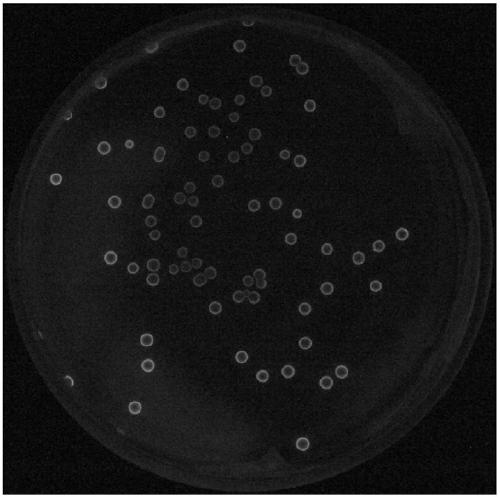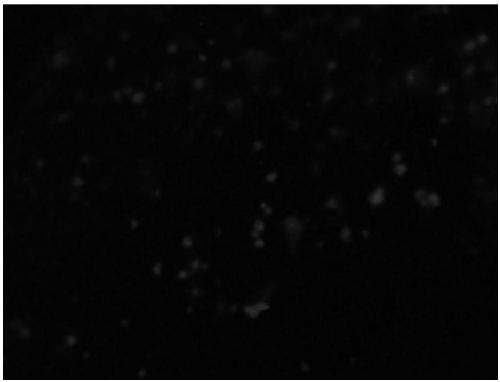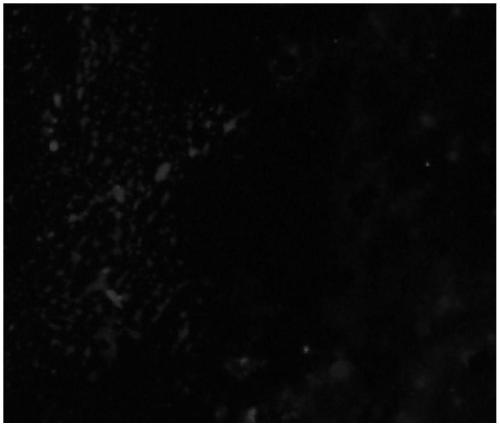Method for improving electric transformation efficiency of genus cupriavidus bacteria with high GC content
A technology of copper-eating bacteria and electrotransformation, applied in the field of genetic engineering, can solve the problems of low transformation efficiency, inability to transform, and low transformation efficiency, and achieve the effect of improving electrotransformation efficiency
- Summary
- Abstract
- Description
- Claims
- Application Information
AI Technical Summary
Problems solved by technology
Method used
Image
Examples
Embodiment 1
[0038] Example 1 Plasmid pTR102:: LuxAB electroporation into Cupriavidus taiwanensis X1
[0039](1) Cultivation of the recipient bacteria: Take a ring of Cupriavidus taiwanensis X1 from the cryopreservation tube and culture it on LB solid medium at 37°C for 24 hours at a constant temperature, pick the activated single colony, and inoculate it in 100ml containing 1% v / v spit Warm 80 and 100U / mL pectinase in 20% LB liquid medium, shake culture at 37°C until OD 600 = about 0.6, then centrifuge at 6000 g at 4°C for 15 min to collect the bacteria, resuspend and wash twice with sterile deionized water.
[0040] (2) Preparation of competent cells: resuspend the cells obtained in step (1) in 10% pre-cooled glycerol, centrifuge at 5000g at a constant temperature for 10 minutes at 4°C, remove the supernatant to collect cells, repeat this operation once, and obtain The bacteria were resuspended in 1ml of 10% pre-cooled glycerol, and the obtained competent cells could be directly used fo...
Embodiment 2
[0049] Example 2 Plasmid pTR102::GFP electroporation into Cupriavidus taiwanensis X1
[0050] The difference from Example 1 is that the plasmid pTR102::LuxAB in step (3)b was replaced with pTR102::GFP.
[0051] The construction method of plasmid pTR102::GFP is as follows: 1) using the commercialized plasmid PPK2-OSCA-GFP as a template to amplify the GFP gene; 2) using restriction enzymes PstI and KpnI to double-digest pTR102::LuxAB; 3) The amplified GFP gene was inserted into the large fragment recovered from pTR102::LuxAB after double enzyme digestion, and the plasmid pTR102::GFP was constructed.
[0052] Plasmid pTR102::GFP contains the green fluorescent protein gene GFP. Bacteria successfully transformed into the plasmid can not only grow on corresponding antibiotic-resistant plates, but also emit green fluorescence under a fluorescent microscope, as shown in figure 2 shown.
[0053] In this embodiment, the electrical conversion efficiency can reach 2.0×10 4 cfu / ug~2.4×...
Embodiment 3
[0054] Example 3 Plasmid pTR102:: GFP electroporation into Cupriavidus gilardii T-1
[0055] The difference from Example 2 is that the Cupriavidus taiwanensis X1 in step (1) is replaced by Cupriavidus gilardii T-1.
[0056] Plasmid pTR102::GFP contains the green fluorescent protein gene GFP. Bacteria successfully transformed into the plasmid can not only grow on corresponding antibiotic-resistant plates, but also emit green fluorescence under a fluorescent microscope, as shown in image 3 shown.
[0057] In this embodiment, the electrical conversion efficiency can reach 1.7×10 4 cfu / ug~1.9×10 4 cfu / ug.
PUM
 Login to View More
Login to View More Abstract
Description
Claims
Application Information
 Login to View More
Login to View More - R&D
- Intellectual Property
- Life Sciences
- Materials
- Tech Scout
- Unparalleled Data Quality
- Higher Quality Content
- 60% Fewer Hallucinations
Browse by: Latest US Patents, China's latest patents, Technical Efficacy Thesaurus, Application Domain, Technology Topic, Popular Technical Reports.
© 2025 PatSnap. All rights reserved.Legal|Privacy policy|Modern Slavery Act Transparency Statement|Sitemap|About US| Contact US: help@patsnap.com



